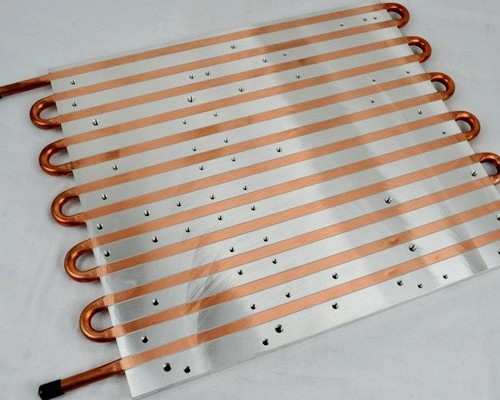Higher power in smaller spaces
Ever increasing demands for higher power density solutions have driven designers of high power electronics equipment to seek more efficient and effective cooling systems. The requirement for large surface areas, where convection or forced air cooling is used, defines the space which will be taken up by the thermal management system. Liquid Cooled Plate (LCP) designs allow much greater scope for reducing the overall size of the equipment, or increasing the power rating available within a given space.
Selecting the right cold plate technology
While the application may drive the choice of LCP over other cooling methods, performance and cost will be the factors that determine which cold plate technology should be used. Copper and Stainless Steel can be used, but generally the most cost effective cold plates are manufactured using Aluminium, with the liquid being channelled through drilled or extruded channels or embedded copper tubes. More recent advances in processes have enabled more complex designs to be fabricated using controlled atmosphere (or vacuum) brazing techniques, bringing material together in innovative configurations, which could not be achieved using other technologies.
Extruded plate solutions
This technology uses extruded channel profiles with arrangements for directing the flow of liquid through inlet and outlet manifolds, or end pipes. The extrusion is often the lowest basic production cost option, but if a special channel design is required, there is an initial NRE for the tooling to consider.

Fig 1. Cross section of thin wall extruded cold plate.

Fig 2. Example of directed flow via end caps.
Copper Tube Assemblies
In this widely used technology, the liquid is channelled through copper, stainless steel or aluminium tubes, embedded into a machined copper or aluminium base plate. This enables more complex channel shapes to be configured, directing the cooling flow of liquid through the areas which require the most effective thermal transfer i.e. directly under the heat source. As the base plate is only machined and the tubing shaped to fit, there is no initial tooling cost, making this a very popular option for lower life cycle costs in smaller volumes.

Fig 3. Two channel copper tube LCP assembly.
Controlled Atmosphere Brazed (CAB) Assemblies
This is the technology which allows the best customisation and variable geometry for the thermal solution. The assemblies can be in either aluminium or copper, and allow cooling on one or both sides of the plate. The assemblies are designed in 2 parts:
Firstly, a main base plate which will be machined with the optimum layout of cooling channels, including special features to create the best combination of smooth and turbulent flow in order to optimise the cooling effect around the high heat source areas.
Secondly a top plate which will be fitted over the machined base and sealed using a Controlled Atmosphere Brazing process. The process involves removing the grease from the surfaces and applying a brazing sheet of Aluminium / Silicon alloy, which is heated in a controlled vacuum to a liquid state, forming aluminium joints between the two parts of the assembly.

Fig 4. Complex machined channels internal to a CAB assembly.

Fig 5. Completed CAB assembly.
Making it happen
Working closely with our technology partner Mecc.Al S.r.l. we have all of these design options available to us and our customers. If you have a new thermal management requirement, from simple liquid cooled plate extrusions to complex controlled atmosphere brazing techniques, we are able to provide the right technology and the expertise to make the product a reality. Call us now to discuss your next project – we can help to make it happen.

